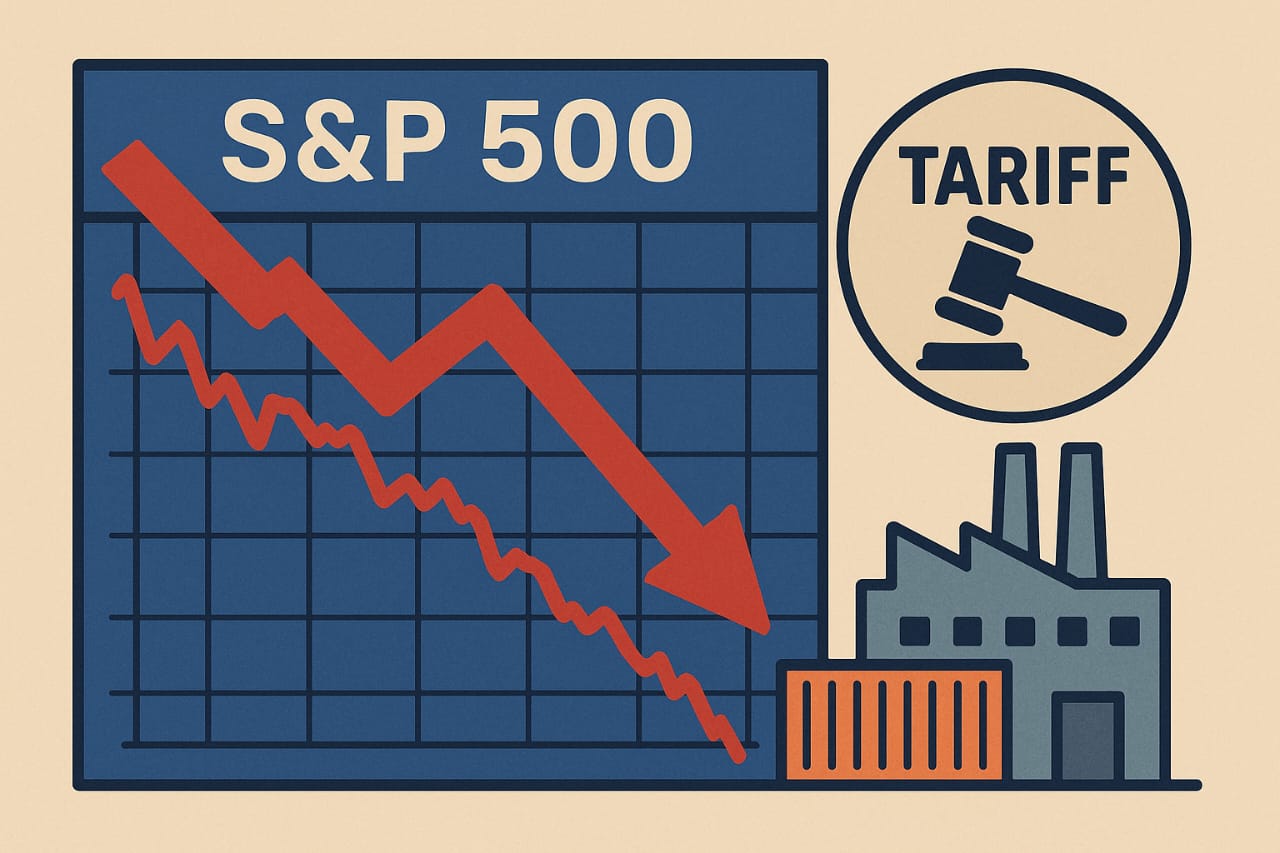The financial markets are entering a period of heightened uncertainty as the prospect of new tariffs threatens to disrupt global trade. On June 12, 2025, S&P 500 futures fell by 0.51%, and Dow Jones Industrial Average futures dropped by 0.63%, signaling a weak market open. These declines follow President Trump’s announcement regarding the potential implementation of unilateral tariffs on key U.S. trade partners, prompting widespread concerns among investors. With global trade relations hanging in the balance, it’s crucial for investors to understand the risks and develop strategies to navigate this turbulent period.
Why This Matters for Investors
The potential for new tariffs represents a significant risk to the markets, particularly to those sectors that rely heavily on global trade. Historically, tariffs have disrupted supply chains, increased production costs, and slowed economic growth, all of which can negatively impact corporate earnings and market performance.
The announcement by President Trump has already led to a dip in market futures, which could signal further declines once the market opens. This is particularly concerning for investors who have seen strong returns from sectors like technology, industrials, and consumer goods that depend on international trade and supply chains.
Impact on Key Sectors
- Technology and Consumer Goods: Companies that import raw materials or components from overseas will likely face higher costs, which may squeeze profit margins. Tech giants and consumer goods manufacturers could see stock price volatility as tariffs are imposed on imported goods.
- Energy: Oil prices have already experienced fluctuations due to tariff concerns. Energy stocks could face additional volatility if the tariff situation escalates, affecting global energy prices.
- Manufacturing and Industrials: Companies in the industrials sector, particularly those involved in manufacturing goods for export, are directly impacted by tariff threats. An increase in tariffs would raise costs and reduce demand for American-made products abroad.
- Financial Markets: The broader stock market itself, including the S&P 500, could face further sell-offs as tariff concerns persist. Additionally, investors are likely to seek safer assets, such as government bonds and gold, in times of geopolitical and economic uncertainty.
Future Trends to Watch
The coming weeks will be critical in determining the trajectory of the markets. Here are some factors that investors should monitor closely:
- Negotiation Developments: Keep an eye on trade talks between the U.S. and its trade partners. Any progress or escalation will likely impact market sentiment.
- Federal Reserve Actions: If tariffs continue to affect the economy, the Federal Reserve may step in with interest rate adjustments or stimulus measures to counteract the slowdown.
- Earnings Reports: Corporate earnings in the coming quarters will provide insight into how companies are coping with the increased costs from tariffs. These reports will likely be a key driver for stock movements.
Credible References
According to Barron’s, the announcement of potential tariffs has raised concerns among investors, as it signals a return to protectionist policies that could negatively affect global trade. Reports from reputable sources such as the Wall Street Journal and the New York Post highlight how markets have reacted to these tariff threats, with futures on major indices already showing signs of stress. Financial analysts are keeping a close watch on the situation, with many suggesting that the market may experience short-term volatility until more clarity is provided.
Actionable Takeaways:
For investors, the key takeaway is to approach this uncertain period with caution. The tariff threats introduce significant volatility and risk to the market, and portfolios could be adversely affected by ongoing trade tensions. Here are some strategies to consider:
- Diversify Your Portfolio: Spread investments across sectors and asset classes to reduce exposure to any one area that may be heavily impacted by tariffs.
- Focus on Defensive Stocks: Consider allocating more capital into defensive sectors such as utilities, healthcare, and consumer staples, which tend to perform better during economic slowdowns.
- Monitor Trade Talks Closely: Stay informed about trade negotiations and adjust your investment strategy based on the outcome. Tariff resolution could provide a market rally, while escalation could prompt further market declines.
Stay updated with MoneyNews.Today for the latest market insights and actionable advice. As the market navigates these uncertain times, we’ll keep you informed on key developments that could impact your investments.





